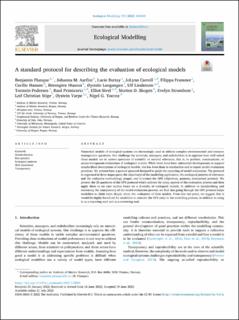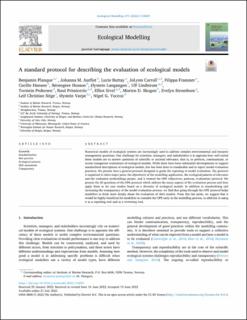| dc.contributor.author | Planque, Benjamin | |
| dc.contributor.author | Aarflot, Johanna Myrseth | |
| dc.contributor.author | Buttay, Lucie | |
| dc.contributor.author | Carroll, JoLynn | |
| dc.contributor.author | Fransner, Sara Filippa Krusmynta | |
| dc.contributor.author | Hansen, Cecilie | |
| dc.contributor.author | Husson, Berengere | |
| dc.contributor.author | Langangen, Øystein Ole Gahr | |
| dc.contributor.author | Lindstrøm, Ulf Ove | |
| dc.contributor.author | Pedersen, Torstein | |
| dc.contributor.author | Primicerio, Raul | |
| dc.contributor.author | Sivel, Elliot Manuarii | |
| dc.contributor.author | Skogen, Morten D. | |
| dc.contributor.author | Strombom, Evelyn | |
| dc.contributor.author | Stige, Leif Christian | |
| dc.contributor.author | Varpe, Øystein | |
| dc.contributor.author | Yoccoz, Nigel | |
| dc.date.accessioned | 2023-01-10T13:44:03Z | |
| dc.date.available | 2023-01-10T13:44:03Z | |
| dc.date.created | 2022-08-22T14:55:13Z | |
| dc.date.issued | 2022 | |
| dc.identifier.citation | Ecological Modelling. 2022, 471 . | |
| dc.identifier.issn | 0304-3800 | |
| dc.identifier.uri | https://hdl.handle.net/11250/3042412 | |
| dc.description.abstract | Numerical models o ecological systems are increasingly used to address complex environmental and resource management questions. One challenge or scientists, managers, and stakeholders is to appraise how well suited these models are to answer questions o scientifc or societal relevance, that is, to perorm, communicate, or access transparent evaluations o ecological models. While there have been substantial developments to support standardised descriptions o ecological models, less has been done to standardise and to report model evaluation practices. We present here a general protocol designed to guide the reporting o model evaluation. The protocol is organised in three major parts: the objective(s) o the modelling application, the ecological patterns o relevance and the evaluation methodology proper, and is termed the OPE (objectives, patterns, evaluation) protocol. We present the 25 questions o the OPE protocol which address the many aspects o the evaluation process and then apply them to six case studies based on a diversity o ecological models. In addition to standardising and increasing the transparency o the model evaluation process, we fnd that going through the OPE protocol helps modellers to think more deeply about the evaluation o their models. From this last point, we suggest that it would be highly benefcial or modellers to consider the OPE early in the modelling process, in addition to using it as a reporting tool and as a reviewing tool. Standardisation Best practice Ecological patterns Skill assessment Transparency | |
| dc.language.iso | eng | |
| dc.title | A standard protocol for describing the evaluation of ecological models | |
| dc.title.alternative | A standard protocol for describing the evaluation of ecological models | |
| dc.type | Peer reviewed | |
| dc.type | Journal article | |
| dc.description.version | publishedVersion | |
| dc.description.version | publishedVersion | |
| dc.subject.nsi | VDP::Zoologiske og botaniske fag: 480 | |
| dc.subject.nsi | VDP::Zoology and botany: 480 | |
| dc.source.pagenumber | 11 | |
| dc.source.volume | 471 | |
| dc.source.journal | Ecological Modelling | |
| dc.identifier.doi | 10.1016/j.ecolmodel.2022.110059 | |
| dc.identifier.cristin | 2045021 | |
| dc.relation.project | Norges forskningsråd: 276730 | |
| cristin.ispublished | true | |
| cristin.fulltext | original | |
| cristin.fulltext | original | |
| cristin.qualitycode | 1 | |

